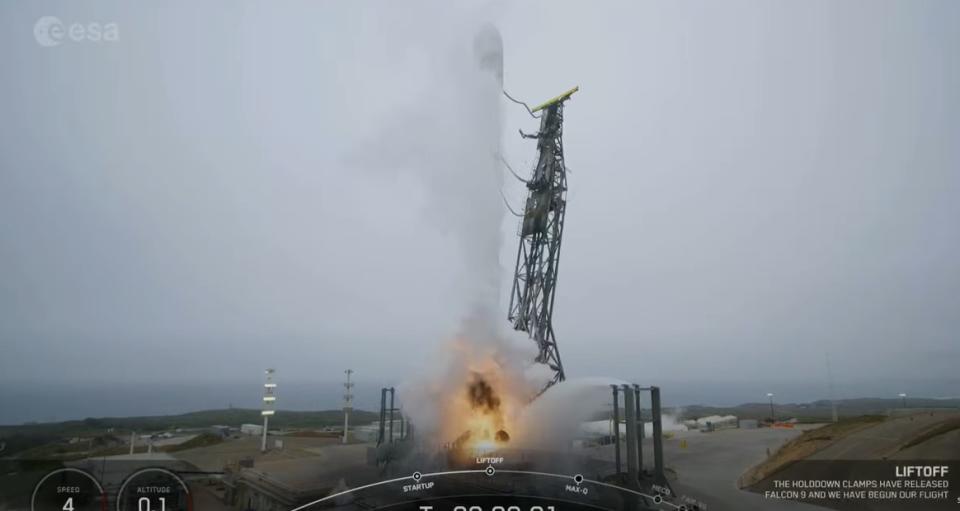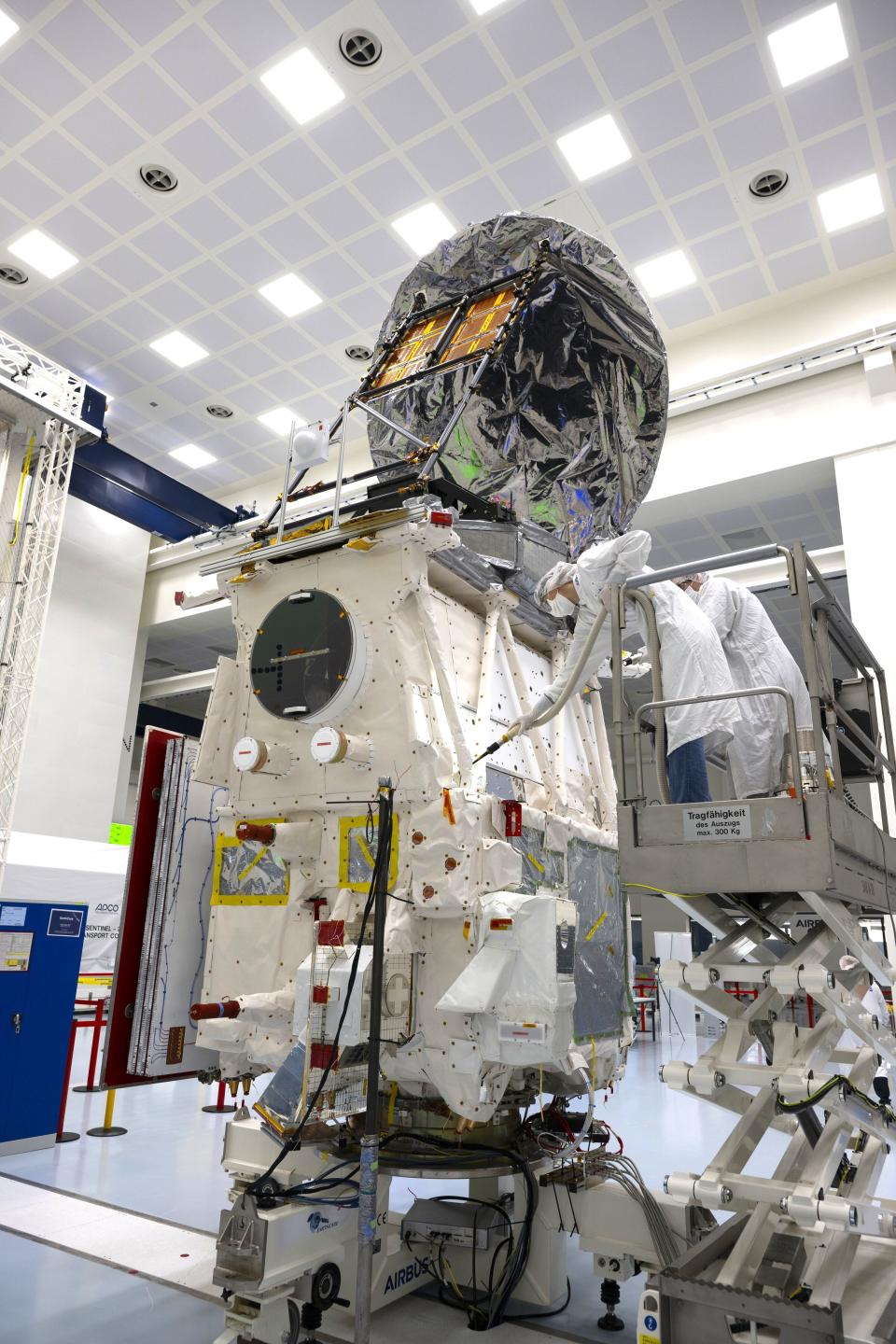Probe designed to study how clouds affect Earth’s climate launched into space
A satellite that will look inside clouds to help make more accurate weather forecasts and climate predictions has been launched into space.
EarthCARE blasted off on SpaceX’s Falcon 9 rocket from Vandenberg Space Force Base in California.
The probe will help scientists understand how clouds and aerosols such as dust and smoke play a role in heating and cooling the Earth’s atmosphere.
The satellite will also measure radiation emitted by the planet.
Many of its components, including the main structure and two key instruments, were built in the UK.

Data from EarthCARE – which stands for Earth Cloud Aerosol and Radiation Explorer – could help in mitigating the threats posed by global warming, experts say.
It is the brainchild of Professor Anthony Illingworth, from the University of Reading, who conceived the idea more than 30 years ago.
The project was adopted by the European Space Agency (ESA) in 2004, and later became a joint mission with the Japanese space agency, Jaxa.
Thorsten Fehr, ESA’s EarthCARE mission scientist, described the launch as “one of the greatest moments in my professional life”.
He said: “It was just such an exciting moment to see this perfect launch and deployment of the satellite.”
Bjorn Frommknecht, ESA’s EarthCARE mission manager, said: “I’m speechless… it’s very beautiful emotions and very intense.
“We have been waiting for that (EarthCARE satellite launch) for a very long time.”
Clouds play a vital role in controlling the temperature of the planet by reflecting sunlight back out to space and trapping heat.

But little is known about how these drive the Earth’s climate system.
The three-year mission, which cost more than 800 million euros (£680 million), is expected to provide answers.
The UK Space Agency (UKSA) contributed around 120 million euros (£102 million) towards the mission over a period of 20 years.
The satellite weighs just over two tonnes (2,200kg) and measures a little over 17 metres (56ft) in length.
On board are four instruments that will analyse cloud structures in detail, take images, and measure how much heat from the Sun is being trapped by clouds.
Surrey Satellite Technology (SSTL) developed the satellite’s MSI (multi-spectral imager) instrument, which comes with two cameras, while space manufacturer Thales Alenia Space UK supplied the broadband radiometer instrument, which will provide measurements of the reflected solar and emitted heat radiation.
LIFTOFF🚀 for #EarthCARE! pic.twitter.com/QolbDRYVL6
— ESA Earth Observation (@ESA_EO) May 28, 2024
Airbus Defence and Space UK was responsible for building EarthCARE’s base platform.
Ralph Cordey, head of Earth Science at Airbus Space UK, said: “Today, EarthCARE, the most complex satellite yet in ESA’s Earth Explorer programme, starts its three-year mission to improve understanding of how heat flows in our planet’s atmosphere.
“Airbus is delighted to have led the development of EarthCARE with the support of industries and agencies across Europe, Japan and North America.”
Other UK collaborators include the National Centre for Earth Observation (NCEO), the universities of Oxford and Leicester, Imperial College and the National Centre for Atmospheric Science.
Once launched, EarthCARE will circle Earth every 90 minutes at an altitude of around 400km (250 miles).
It will cross the equator in the early afternoon to optimise daylight conditions, ESA said.


